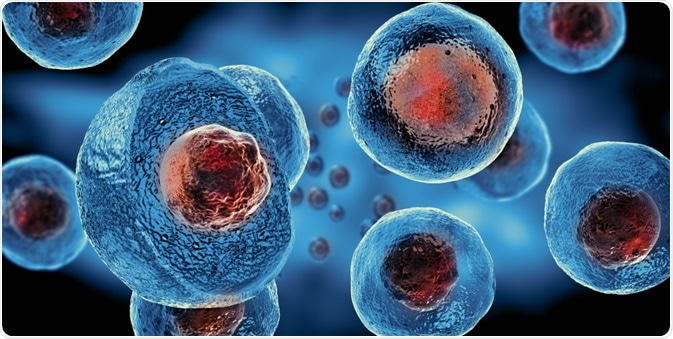There are several ethical issues that are raised while working with stem cells. The ethical issues were addressed in 2005 guidelines for research with human embryonic stem cells by the National Academies.
This urges scientists who work with embryonic stem cells to be responsible, ethical and sensitive in their work. The guidelines were not legally binding but laid the foundation for stem cell research principles for many scientists and their laboratories.

Image Credit: Giovanni Cancemi/Shutterstock.com
Controversy with embryo use
The largest controversy with stem cell research is the use of an embryo. This deals with the controversies surrounding laws and beliefs regarding contraception, abortion, and in vitro fertilization.
To obtain embryonic stem cells, researchers use the inner cell mass from the blastocysts (fertilized eggs) from an in vitro fertilization facility. These blastocysts are the ones that are excess and donated voluntarily by couples who have been treated successfully for their infertility.
Embryos that have been fertilized within a woman’s body are not used. The blastocysts used for science are donated of free will with the informed consent of the couple.
Controversies arise if the embryo is human and whether the embryo has legal and moral rights. The removal of the inner cell mass prevents the blastocysts from continuing to develop. Although such blastocysts would likely be discarded and destroyed by the clinics eventually if not used for research, controversy still shrouds their use for a scientific purpose.
Some believe that the life of a human being begins at the moment of conception and the embryos deserve protection.
In addition, some cultures and religious traditions do not support the use of human life as a means to some other end despite the end being a noble one. Yet other cultures support embryonic stem cell research as they believe that the embryo has a moral right as a human only after a few months of development.
Controversy with reproductive cloning
Cloning and stem cell research are two different procedures altogether. They have a common link, however, and this is the use of a laboratory technique called nuclear transfer.
Using this method scientists can create blastocysts containing stem cells that are “clones” of a single adult cell using the genetic material from an adult cell into an ovum or egg whose nucleus has been removed. This could result in identical genetic matches of the adult donor leading to a safer alternative to traditional tissue transplants.
In 2002, the National Academies issued the report “Scientific and Medical Aspects of Human Reproductive Cloning” concluding that human reproductive cloning should not be practiced as it is dangerous and may fail.
Controversy regarding Human-Animal Chimeras
Chimeras mean organisms that contain cells or tissues from more than one organism. Ethics steps in when human and animal cells are combined to create chimeras. For example, human stem cells may be transplanted into a mouse to check for certain functions (human stem cells making pancreatic cells into a mouse for example for developing therapies for diabetics).
Chimeras are important for advancing stem cell research to form actual therapeutic methods and targets. This is because the therapies developed with the stem cells need to be tried on animals before being tried on humans.
Chimeras with human consciousness and the introduction of human stem cells into a non-human primate (e.g. an ape, chimpanzee, etc.) are prohibited by the National Academies’ guidelines. Similarly, the organization also prohibits the introduction of any animal or human cells into a human blastocyst. Breeding of human-animal chimeras is also prohibited.
Further Reading